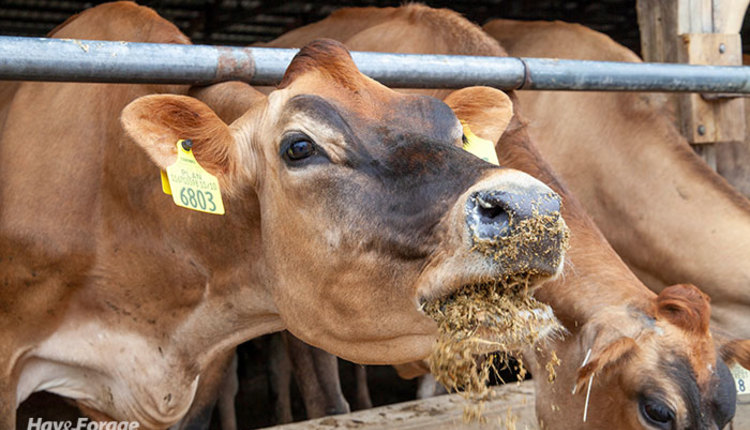Cool your cows with high-quality forage |
| By Mike Rankin, Managing Editor |
|
|
 Touting the benefits of harvesting high-quality forages is nothing new. By doing so, feed costs are minimized, and milk production is maximized. The value of feeding high-quality forages may reach its peak during the summer. This is because feeding forage that is lower in neutral detergent fiber (NDF) and higher in NDF digestibility allows the cow to process feed in less time and expend less energy doing so. The net effect is a cooler cow during the heat of summer. “Digesting forage generates more heat than digesting grain,” notes Rick Grant, president of the Miner Institute in Chazy, N.Y. “One way to correct this problem is to feed high-quality forage during the summer, which allows for less intake while still maintaining a balanced diet.” Grant explains that heat stress lowers the rumen pH of a dairy cow to well below 6. This results in inefficient fiber fermentation and low microbial protein output. The result is less milk and milk component production. Fiber is needed to maintain rumen pH under hot conditions. But if forage is high in fiber, cows spend more time both eating and processing the feed. “That extra time spent at the bunk means the cow will have to stand longer — perhaps an hour more each day — and subtracts from the time she has for activities such as resting and cooling,” Grant explains. “Highly digestible forage NDF will help to reduce the overall heat load on the cow and provide the proper amounts and ratios of volatile fatty acids to maintain milk and milk component synthesis.” Although providing high-quality forage during the heat of summer offers an added benefit, Grant also reminds dairy producers that conventional means of heat abatement such as fans, shades, and misters must also be used to realize the full benefits of feeding highly digestible forages during periods of heat stress.
|
